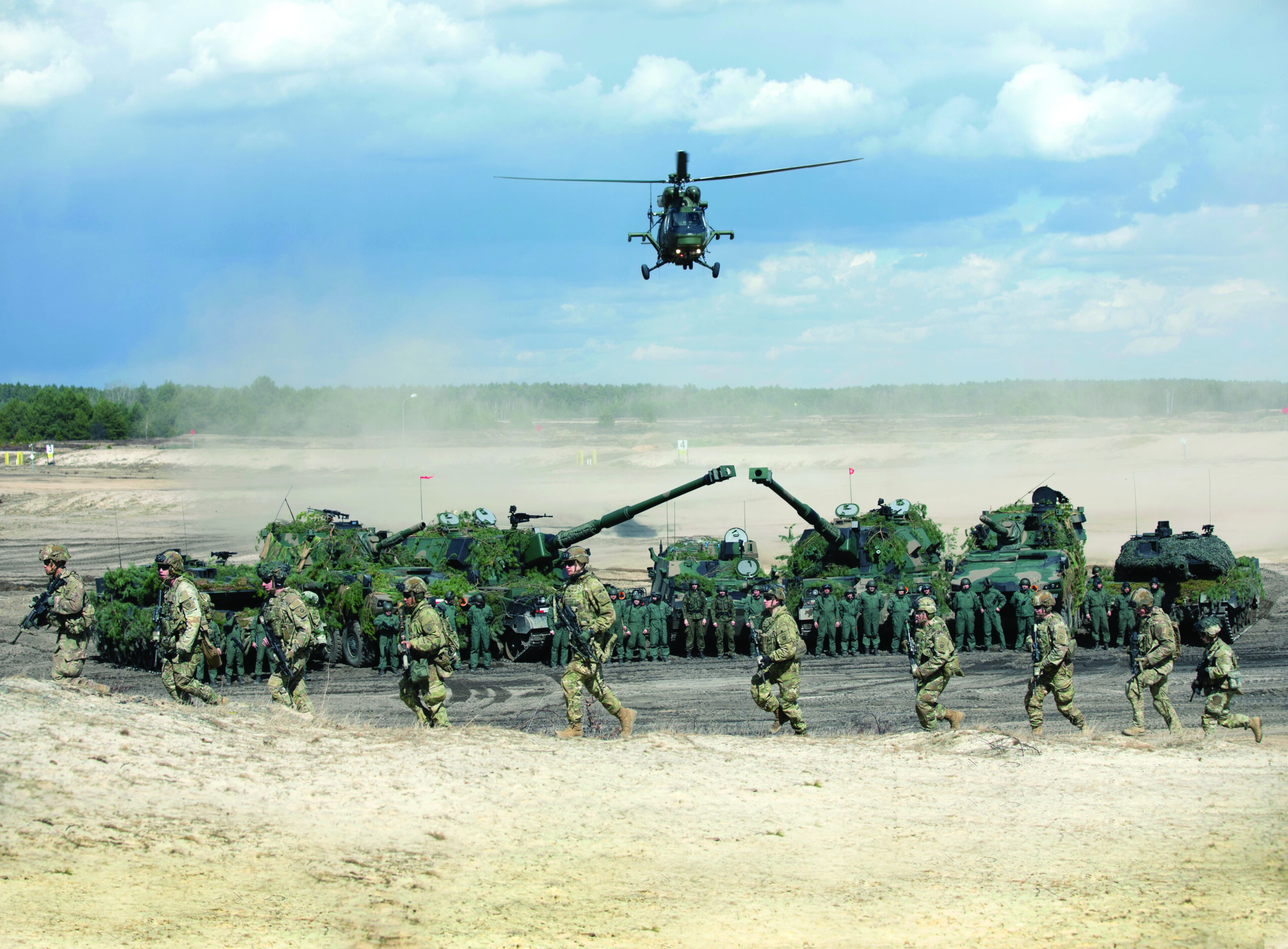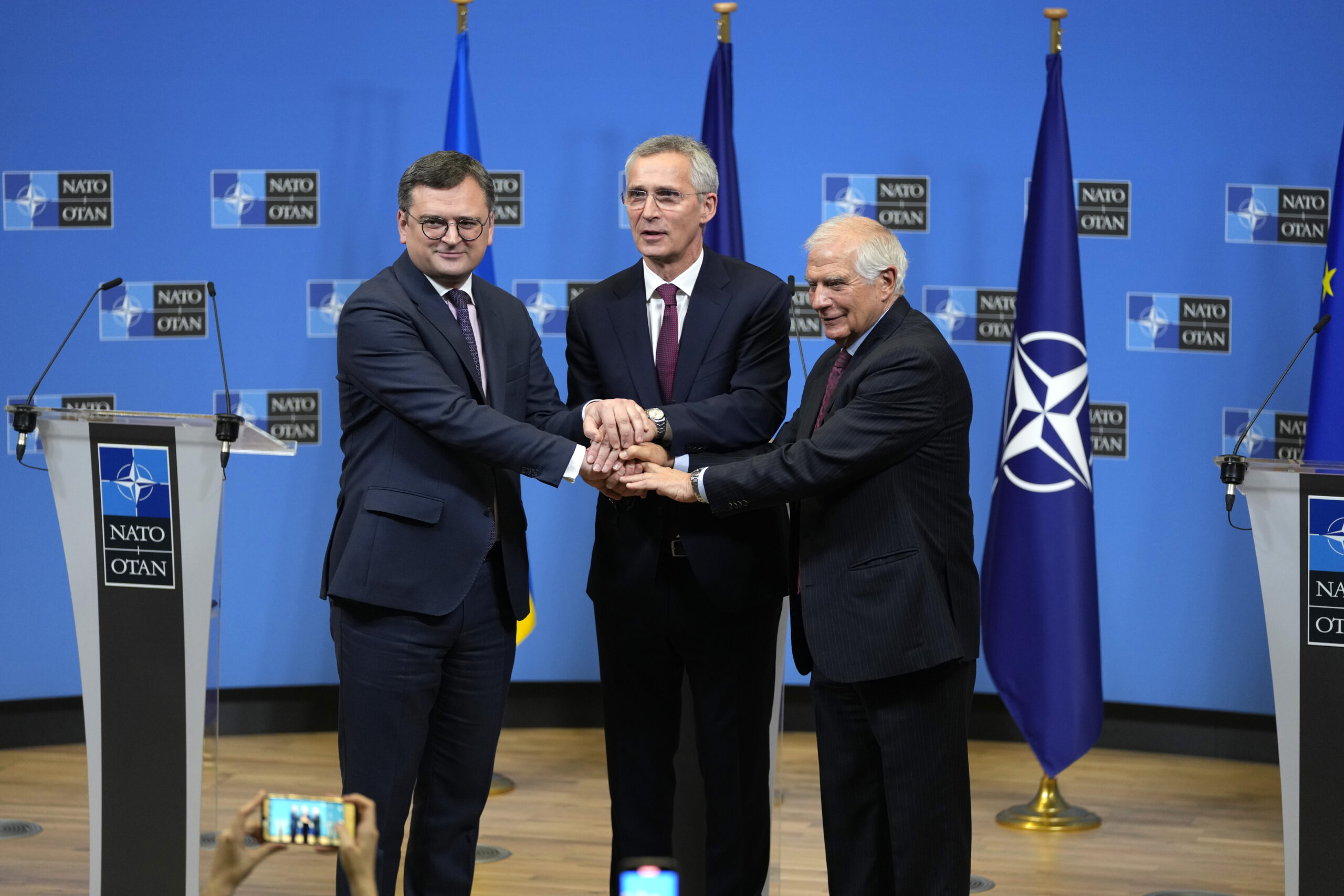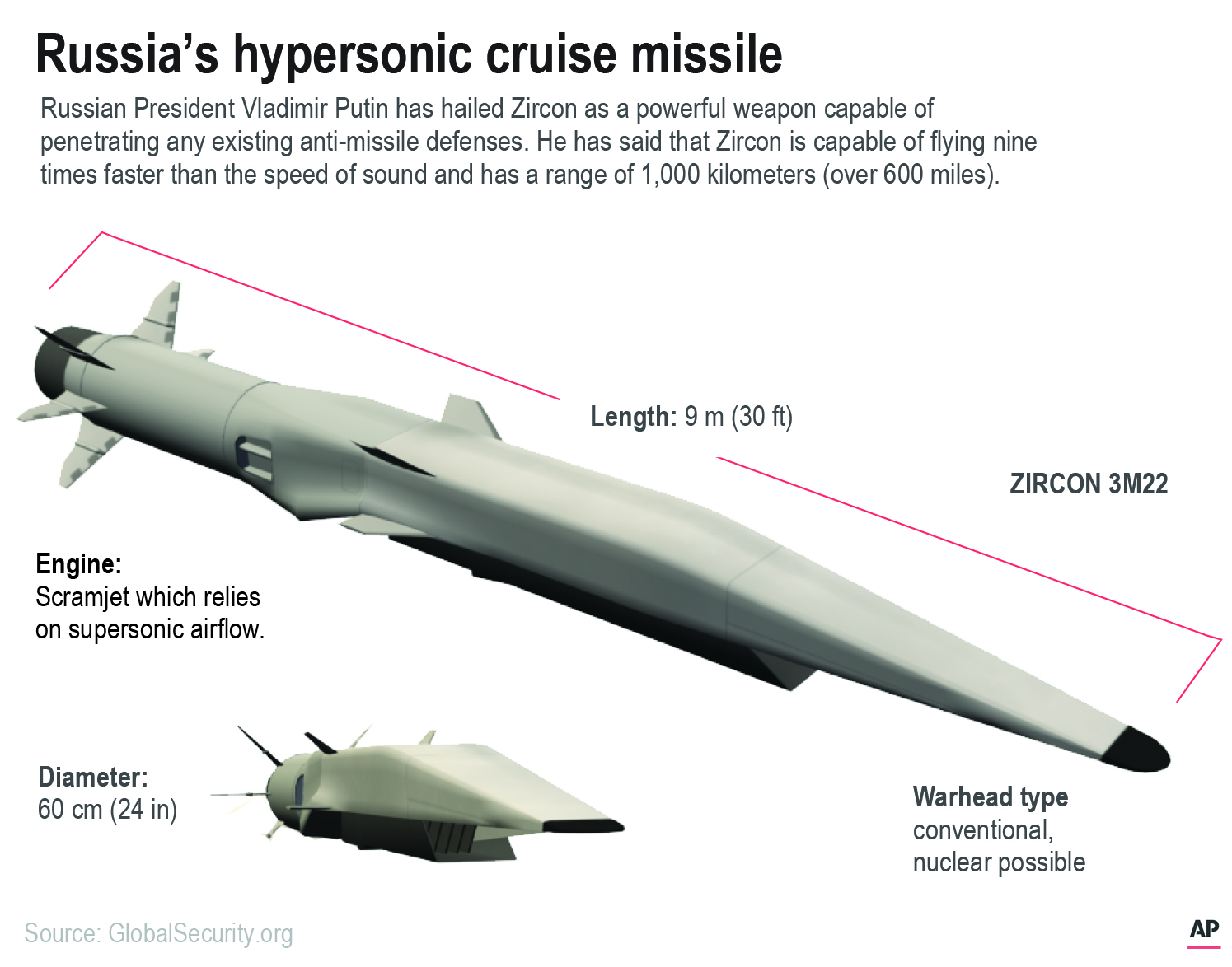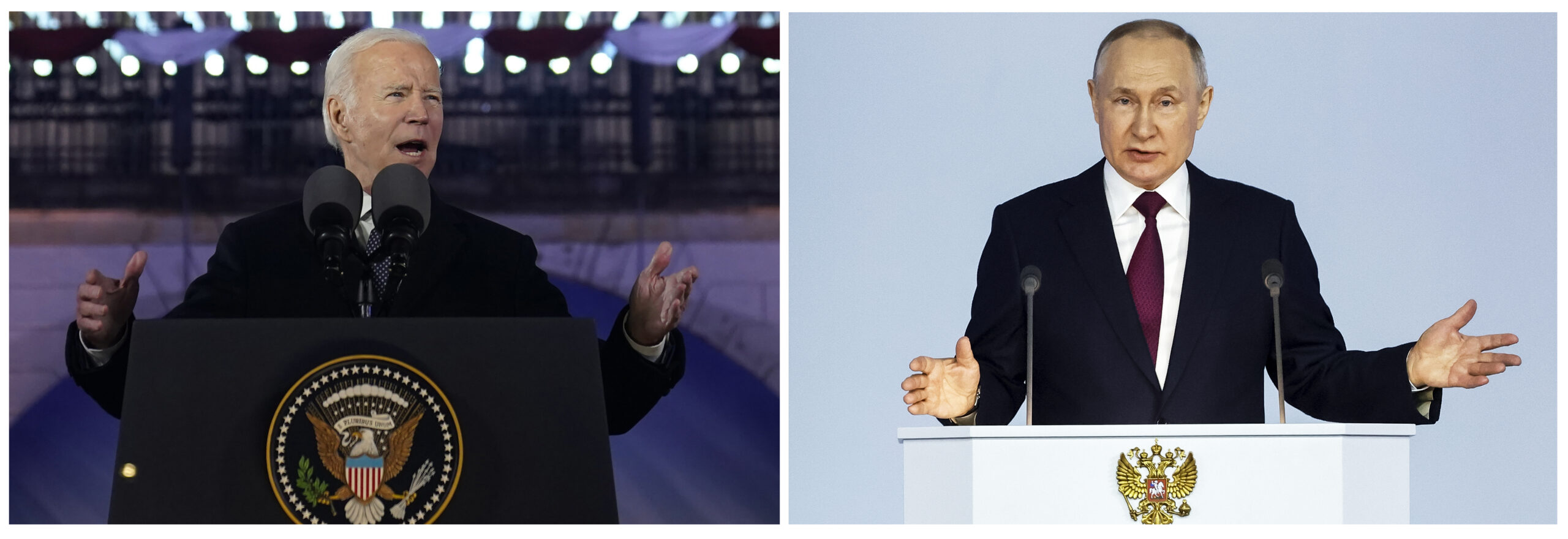Ukrainian President Volodymyr Zelensky knows he has only one sure path to lasting victory over Vladimir Putin’s invasion force — and it doesn’t involve trading land for peace.
“There is no, and should not be, any alternative but to completely get rid of Russian aggression, to liberate the land, to liberate people, because every city, town, and village that remains under occupation means people staying in captivity,” Zelensky told world leaders gathered at the Munich Security Conference this month. “May freedom be the subject of compromise? No. And it’s a rock-solid no.”
FOUR TAKEAWAYS FROM BIDEN’S UNEXPECTED TRIP TO UKRAINE
For Ukraine to win, Zelensky has come to believe, it must expel Russian forces from every inch of its territory, including the Crimean Peninsula, which Putin illegally annexed in 2014, and then secure membership in NATO — or if that’s not possible, join an alliance of willing Western countries to ensure a humiliated Putin doesn’t try again in a few years after he’s rebuilt his now enfeebled military.

And, Zelensky has argued, Ukraine needs to win this year or face the prospect of a protracted frozen conflict that would result in untold additional civilian casualties and likely lead to peace only on Putin’s terms.
For Putin to win, he needs only to play for time and hold on to what he’s got.
Much has been made of Russia’s horrific battlefield losses — estimated at more than 200,000 dead and wounded. It’s the result of World War I-style frontal infantry assaults by ill-trained and poorly equipped conscript and convict troops.
But less publicized is the fact that Ukraine, too, has suffered heavy losses. Though not nearly mass casualties suffered by Putin’s cannon fodder.
Russia’s anticipated spring offensive appears to be off to a sputtering start, with more dissension in the ranks, uninspired leadership, and morale-sapping battlefield disasters. Including a recent assault on the eastern coal-mining town of Vuhledar that British intelligence said left two elite Russian naval infantry brigades decimated and “likely combat ineffective.”
But Putin appears unfazed by the loss of almost half of his pre-invasion army so long as he can maintain the fiction at home that Russia is the victim of Western aggression. If its very survival is at stake, his “special military operation” is worth the pain.

“Putin right now appears ready to sacrifice, you know, what, a half-million people, 750,000 soldiers, and appears right now to be able to do that and determined to do it,” says retired Gen. Rick Hillier, former Canadian chief of the defense staff.
“Ukraine cannot take the kind of losses that it would suffer to confront those numbers of Russian troops,” Hillier said at an Atlantic Council forum.
The paradox is that Russia can win, even while it seems to be losing. Ukraine can lose simply if it doesn’t seem to be winning enough.
“Ukraine cannot afford battlefield failure; Russia can afford many battlefield casualties and failure as long as Putin believes he can ultimately succeed,” warned former NATO Supreme Commander and retired Army Gen. Wes Clark at the same Atlantic Council event.
In Putin, Ukraine faces an implacable foe who has boxed himself in and has bet everything, including possibly his very life, on eking out something he can sell as a victory.
“It’s not just between the Russian military and the Ukrainian military that there’s that imbalance but between him and us,” said Eliot Cohen of the Center for Strategic and International Studies. “Between his willpower and our willpower.”

Putin firmly believes he can outsuffer the Ukrainians, argues retired Gen. David Petraeus, former U.S. Central Command commander and CIA director.
“The Ukrainians, Europeans, and Americans, we have to prove him wrong in that regard. He’s not going to be able to do to them what the Russian empire did to Napoleon’s army or the USSR did to the Nazis,” Petraeus said at the Atlantic Council event. “We have to do everything we can again, short, medium-term, long-term, to enable Ukraine to hasten the moment when Vladimir Putin recognizes that this war is unsustainable on the battlefield because of the horrific losses that Russians are taking.”

Putin is banking on the West cracking. Which is why President Joe Biden keeps foot-stomping the message that the United States is in it “for as long as it takes.”
But the push by some Republicans in Congress to cut some or all aid to Ukraine, along with comments from an anonymous Biden administration official quoted by the Washington Post as warning Ukraine’s leaders “we can’t do anything and everything forever,” has undercut that message and emboldened Putin’s last stand strategy.
“I think they, Russia, are in it for the long fight, and any signal that we send that we are not in it for the long fight just lends credence to their hope that they can wait us out,” says Emily Harding, deputy director of CSIS’s International Security Program.
Clark, the former NATO commander who won the 1999 Kosovo War against Slobodan Milosevic without putting a single NATO troop on the ground or suffering a single allied casualty, argues the current U.S. policy, which is to put Ukraine in the strongest position for a negotiated settlement, is likely to result in “a soft failure by both combatants.”
“That’s a policy that’s unlikely to produce lasting success. The reason is Mr. Putin is determined to take Ukraine. He wants it, he wants it,” says Clark.
And the Ukrainians, he says, “simply cannot politically, morally, accept giving up their territory in a concession to aggression.”
“Peace negotiations in [Putin’s] mind means that he gets to keep what he has now,” said Harding at the CSIS event.
The real center of gravity in the war is Putin’s state of mind, argues Clark. “When he believes he cannot succeed, that’s when this war will end,” Clark said.
To that end, Clark, Petraeus, Hillier, and just about every retired four-star commander believe the U.S. and its allies need to pull out all the stops to pump as much advanced weaponry and longer-range ammunition into Ukraine now to prepare for the Ukrainian counteroffensive planned for the coming months.
“All of this is crucial to enable Ukraine to be ready by May, early June, or whenever it is that they decide to conduct their own counteroffensive, hopefully, to cut the land bridge that currently connects Russia proper to Crimea to establish and then to isolate those forces that are on the western side,” Petraeus said.
Ukraine faces a formidable task — mission impossible, some would say — in hoping to dislodge tens if not hundreds of thousands of Russian troops dug in for hundreds of miles behind three lines of defense that include trenches and tank traps.
Right now, thousands of Ukrainian troops are getting a crash course in the United Kingdom and other NATO countries on the tanks, fighting vehicles, and new artillery systems they will use in a few months to try to pierce the Russian lines.
The Ukrainian forces are being trained on NATO-style maneuver warfare. And Ukrainian commanders are being urged by the U.S. to pick their battles carefully.
“They’re dug in across a wide area. They can’t perfectly defend every inch of that, and the way that this war goes will depend upon the Ukrainians,” Defense Secretary Lloyd Austin told CBS this month.
“One year since the launch of Russia’s invasion, President Putin is not preparing for peace. On the contrary, he is preparing for more war,” said NATO Secretary-General Jens Stoltenberg during Biden’s visit to Poland. “So we must sustain and step up our support for Ukraine. We must give Ukraine what they need to prevail.”
CLICK HERE TO READ MORE FROM THE WASHINGTON EXAMINER
Former British Prime Minister Boris Johnson is more sanguine about Ukraine’s prospects telling CNN that Zelensky has “successfully mimicked Winston Churchill” in mobilizing the U.S.
“History teaches us that wars of independence only end one way,” Johnson said, “and with the United States on that side, I’ve got absolutely no doubt at all that the Ukrainians are going to win.”

